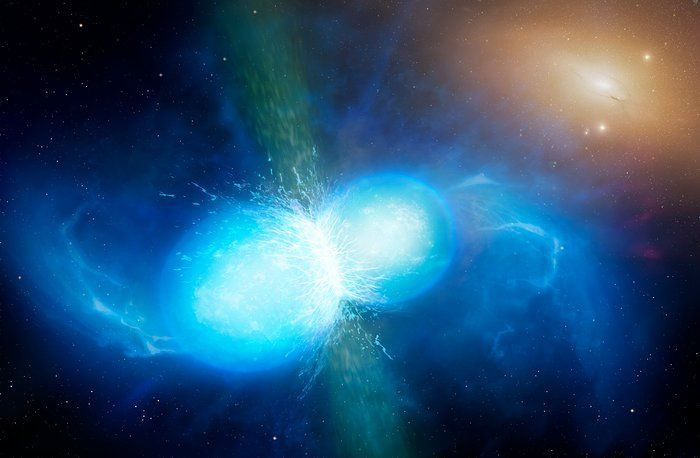X-Rays From Neutron Star Merger Still Persist 1,000 Days After Collision
KEY POINTS
- In 2017, scientists detected X-rays following the collision of two neutron stars
- It was the first time that X-rays were observed following a gamma ray burst
- The X-rays were stil observable even 2 1/2 years after the collision
- Scientists offer possible explanations for the X-ray emission's strange behavior
A team of researchers can still detect lingering X-rays from a neutron star collision that happened 1,000 days prior. The prolonged X-ray emission continues to puzzle scientists.
It was on Aug. 17, 2017, when the Laser Interferometer Gravitational-wave Observatory (LIGO) and Virgo first detected gravitational waves from the merger of two neutron stars. Dubbed GW 170817, the event was observed by various telescopes from all over the world within hours of the first detection.
The initial burst was followed by a short-duration gamma ray-burst (GRB) and a slower kilonova. Nine days later, scientists detected an afterglow that was visible in the electromagnetic spectrum including X-rays, something that was never observed before.
Apart from the fact that it was the first time for X-rays to be detected following a GRB, the event continued to surprise scientists by emitting X-rays for longer than expected. In the case of GW 170817, the afterglow peaked after 160 days then rapidly faded away. But even after the afterglow faded, the X-ray emissions persist even 2 1/2 years after the merger.
"This behavior is markedly different from the garden-variety GRB afterglows, observed to fade within a few minutes since the burst," the researchers of a new study wrote.
In the study published in the Monthly Notices of the Royal Astronomical Society, a team of researchers offered possible explanations for why the X-rays lasted for as long as it did.
It's possible, the researchers say, that it was a new feature. Because GW 170817 was relatively close, it allowed scientists to observe this feature.
It's also possible that the kilonova that followed the jet of gamma rays had its own afterglow. And because GW 170817 is close enough, the instruments captured and detected it as well.
"We saw the kilonova, so we know this gas cloud is there, and the X-rays from its shock wave may just be reaching us," study co-author Geoffrey Ryan of the University of Maryland (UMD) Department of Astronomy said in the UMD news release. "But we need more data to understand if that's what we're seeing. If it is, it may give us a new tool, a signature of these events that we haven't recognized before. That may help us find neutron star collisions in previous records of X-ray radiation."
That said, exactly what is causing the persistent X-ray emissions remains unclear but further observations could help determine which of these possibilities are more likely to be true and, perhaps even help detect other such neutron star mergers.
"We are entering a new phase in our understanding of neutron stars, ” study lead Eleonora Troja of UMD said in the news release. "It may take years to find out the answer to what is going on, but our research opens the door to many possibilities."

© Copyright IBTimes 2025. All rights reserved.






















